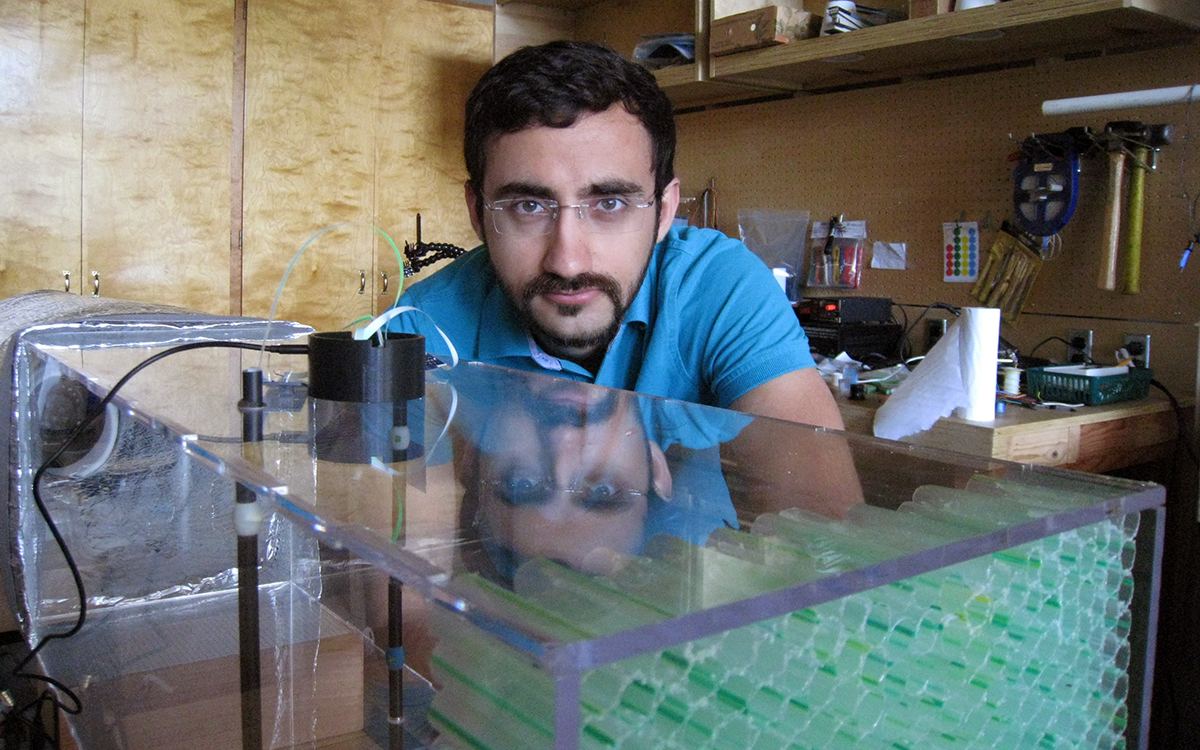Last fall we were impressed by a presentation by Ali Ghahramani, who at the time was completing his PhD dissertation in engineering at USC, related to adaptive sensing and learning for human-centered HVAC operations, using human subject test data. Ali’s technical abilities and the relevance of his studies made him an ideal addition to CBE’s research team, and he joined us this spring as a post-doctoral researcher.
Your education ranged broadly from civil engineering to human comfort studies. How did that evolve?
My bachelor’s degree is in civil engineering, but at USC I wanted to do something different. I first worked on funded project related to occupant comfort, and this helped lead me to focus my thesis on online and adaptive sensing and learning that would enable human-centered HVAC operations. During this time my literature reviews led me to the major papers in this field, it turned out the naming conventions were developed here at UC Berkeley. I came to the Bay Area to give presentations at CBE and Comfy, and this led me to working here at CBE.
How does your work at CBE build on your dissertation research?
I am working on a project funded by the U.S. Department of Energy ARPA-e program, creating working prototypes of wirelessly powered personal comfort devices. As part of this want to identify the most energy-efficient way to provide comfort, by understanding which parts of the body have higher impacts on overall satisfaction. My work included setting up human subject tests, and collecting physiological data such as skin temperatures with 20 subjects. We are now analyzing the data, and we presented a bit of this work at the CBE meeting in May.
What are some of the more technically challenging projects you are working on?
I am working on a project to develop low-cost airflow sensors that can be used in ducts and rooms. This will use ultrasonic transducers, using very high frequencies, around 180 kilohertz, an order of magnitude above what we can hear, it’s like trying to replicate bats’ ears.
The transducers send and receive signals, and we use the time difference between several paths to measure airspeed and temperature. It’s very difficult because we are looking as such a small time scale, only 50-100 nanoseconds, or a billionth of a second, and light only travels 90 feet in this time.
How can this technology benefit people working in the building and other industries?
We are developing this to be used in two devices, one in ducts, and the other in rooms which could affect comfort around a person. If it is accurate enough we may also be able to measure CO2, as the concentration changes the density of air. Maybe could be used in aviation, or under water, in theory it applies to any medium. We are also planning to use it in a new kind of fan that responds to people’s location in a room.
What are your impressions so far of working at Berkeley?
The way I see it, only some universities are really advancing knowledge. The others are just training people [in academia] to go to those places. Berkeley is a place that is advancing knowledge.
What are your longer term goals?
Humans first looked to the sky using the visible spectrum. When we started using microwave and other invisible parts of the spectrum to view the sky, we began to know much more about what is up there.
This is what we are now doing in the building industry. For example, using invisible infrared light to study thermal regulation and comfort. Making the invisible visible. I am very lucky to be working on this. One of my proposals will be to create an array of sensors that can be put anywhere, for example on a monitor, to understand more about physiology and inform how we design for health and comfort.

